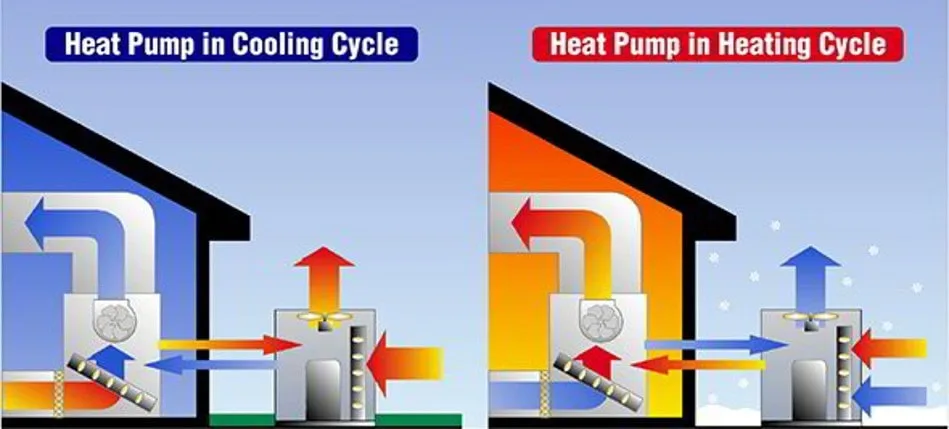A heat pump is a piece of HVAC equipment that is used to both heat and cool a space. Typically, they are found in residential applications in environments with mild winter temperatures or used as a dual fuel heat pump in colder climates, such as the Minneapolis/St. Paul area. When the temperature dips below around 40 degrees, a heat pump will struggle to heat or maintain a home. But for a single unit that can heat and cool, these innovative devices offer many benefits once you understand how they work.
THE COMPONENTS OF A HEAT PUMP
A heat pump is a stand-alone device that is comprised of two key components. The condenser is the outside unit, while the indoor component is the air handler unit. The two parts are connected via a conduit that houses the electrical wiring, refrigerant lines, suction lines, and the condensation drain. One of the key benefits of these compact units is that they are ideal for retrofitting into a building that has no ductwork or has never had central air.
HOW A HEAT PUMP CAN HEAT AND COOL
A heat pump uses refrigerant and electricity to move the heat from one place to another. The heat pump removes heat from the outside air and transfers it into your home to warm it in the winter. In the summer, the heat pump extracts the heat from inside your home and releases it into the air outside to make your home cooler. Of course, this is a significantly simplified explanation of the process.
THE USE OF REFRIGERANT
The secret to the success of a heat pump is the refrigerant in the lines that move from the outside condenser to the inside air handler. In the winter months, the coolant gathers the heat from the outside air and is then compressed. The compression increases the amount of heat significantly. Then the coolant is moved into the interior air handler, where the air is blown across it and warmed. That warmed air then enters your home to increase the temperature and keep you comfortable.
In the summertime, you manually turn the reversing valve on the heat pump to extract the heat from the air inside your home and take it outdoors. Then the heat is removed from the refrigerant into the atmosphere before being circulated back into your home to remove more heat.
WHAT MAKES A HEAT PUMP SO ENERGY EFFICIENT IN THE WINTER?
The electricity that a heat pump uses in the winter to heat your home is not actually used to generate heat. Instead, it is only used to power the unit that moves the heat from outside to indoors. The result is warmth that is far more affordable than gas or other types of heat. But because of the physics behind the process used by a heat pump, once the outside temperature reaches around freezing, the heat produced and your comfort level are likely to decline significantly.
To learn more about how heat pumps can be used effectively in the Minnesota area, call 952-208-4570 to speak to the Blue Ox Heating And Air experts.


